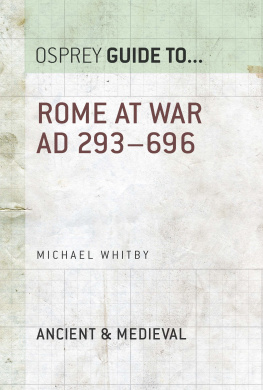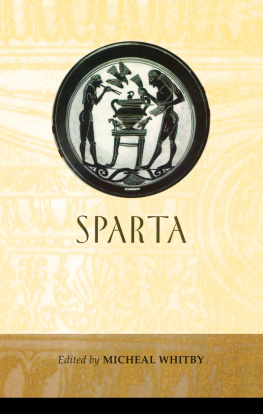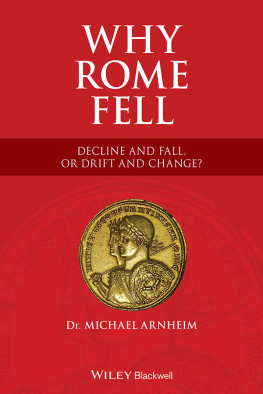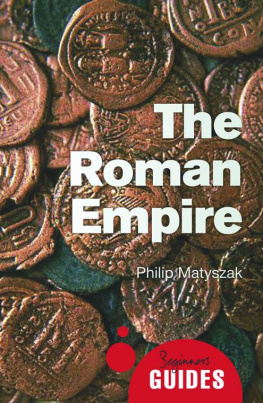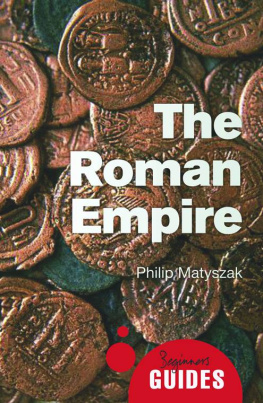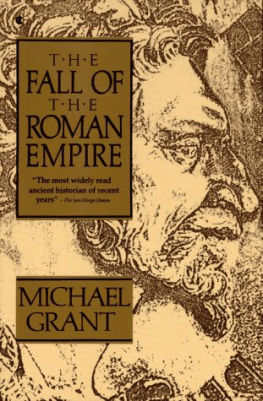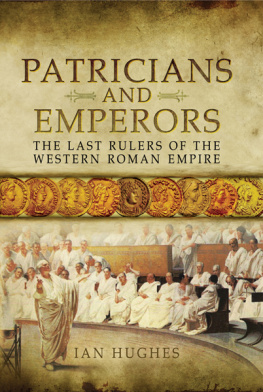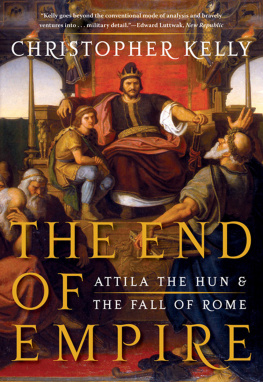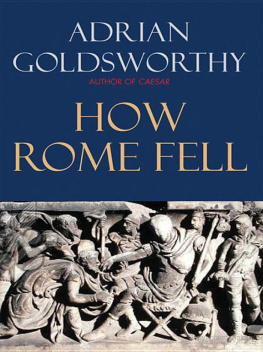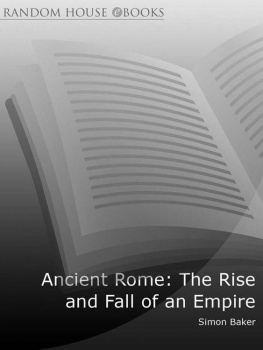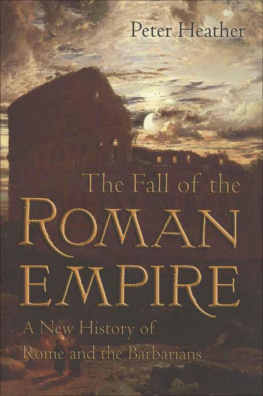Guide To
Rome at War AD 293696
Michael Whitby
Contents
Introduction
In the early third century AD the Roman Empire stretched from Scotland to the Sahara and to the northern River Tigris an enormous imperial enterprise and the most powerful state in the world. Four centuries later the Empire had shrunk to consist of Anatolia, the Aegean fringes of the Balkans and limited territories in Italy around Rome and Ravenna. Still strong in Mediterranean terms, it was forced to confront and interact with a variety of new powers. To the east Arabs, inspired by Islam, had overrun the Levant and Egypt, as well as the Persian kingdom. More than a millennium of conflict between Islamic east and Christian west was introduced as Arab warriors pushed westwards through North Africa and into Spain and regularly raided towards Constantinople. Slav tribes established themselves throughout much of the Balkans, with specific leaders emerging in certain areas: Bulgars in the north-east, Serbs and Croats in the north-west. In Italy the Lombard kingdom, based in the Po valley, fragmented authority in the peninsula, and so it remained until reunification in the 19th century. Franks controlled Gaul, though it was usually split between different branches of the ruling Merovingian dynasty. In the Iberian peninsula the Visigoths had established authority, sometimes tenuously, over the groups who had settled during the fifth century; however, their switch from Arian to Nicene Christianity in the seventh century provided a force for unity which would survive centuries of conflict with Muslim invaders. The British Isles presented another mosaic, with Saxons increasingly dominant in the south and east, Britons holding on in the west, and rival Pictish and Scottish kingdoms in control of southern Scotland. Here again religion offered hope for future unity, with the Saxons progressively converted through the Roman mission based at Canterbury and the Celtic Church, which was dominant in Ireland, Scotland and the north-west, then reconciled with Roman traditions.
By the end of the seventh century many of the important elements of the modern European political landscape were in place, or at least in evidence, but the stages whereby Roman hegemony fragmented are complex. It is essential, above all, to remember that there was nothing inevitable about this process: Europe did not have to be organised into the territorial units and dominated by the national groups with which we are familiar today. Decline and fall has been a powerful model for analysing this transition, from the composition of Edward Gibbons masterwork in the late eighteenth century, and before. But the vitality of the Roman system especially when reinvigorated by Christianity the commitment of peoples to the Roman ideal, and the sheer power of Roman arms also need to be stressed in opposition to this analysis.
Identification of turning points is an understandable temptation, and acceptable provided that the qualifications for each particular date are not forgotten. The conversion of Constantine to Christianity in AD 312 initiated the Empires transformation from polytheism to Christianity, and prompted the development of the Church as a powerful and wealthy institution. For some scholars the Church was yet one more substantial group of idle mouths for Roman tax-payers to support, with unfortunate long-term consequences, but the Church also served imperial goals beyond the frontiers and reinforced loyalties within. In 363 Julians grand invasion of Persia ended in death for him and near disaster for the Roman army, but the setback ushered in 140 years of almost unbroken peace in the eastern Empire. In 378 the eastern emperor Valens was killed in battle at Adrianople in Thrace, and many of his Gothic opponents had to be allocated lands for settlement, but thereafter successive eastern emperors generally managed the Gothic problem to their advantage. When the last sole Roman ruler Theodosius I died in 395, the Empire was split between his young sons, and emperors ceased to campaign regularly in person, but such divisions had occurred in the past, often beneficially, and there were advantages in withdrawing the emperor from the battlefield. Immortal Rome was captured by Alarics Visigoths in AD 410, but it had long ceased to be an imperial capital, so the event was largely of symbolic importance: Augustine in Africa wrote City of God to demonstrate the superiority of the heavenly over the terrestrial city, but in Italy the Visigoths withdrew and emperors continued to rule from Ravenna. In the 440s Attila challenged imperial authority in both east and west, threatening even to reduce emperors to vassal status but his Hunnic federation disintegrated after his death in 453 so that within a decade his heirs were seeking Roman help. In 476 the last Roman emperor in the western Empire was deposed by a barbarian general, but the authority of the eastern emperor was still acknowledged. A western consul was annually nominated to share the chief titular magistracy with eastern colleagues, and under Theoderic the Ostrogoth a regime, which carefully maintained a Gotho-Roman faade dominated the western Mediterranean from Ravenna.
Individually the significance of each of these key dates must be qualified, but cumulatively they contributed to diminishing imperial authority, undermining the fiscal and military structures which permitted the imperial machine to function. By the late fifth century an emperor had become irrelevant in the western Mediterranean, although the eastern ruler was accepted as a figurehead by some. The eastern Empires continuing power was revealed by its ability to organise the reconquest of the Vandal and Ostrogothic kingdoms, which extended to the recovery of parts of Spain and the exercise of intermittent influence in Gaul. Even if the cumulative impact of recurrent bubonic plague and the demands of western warfare left the Empire economically and militarily weaker in AD 600 than it had been in AD 500, in comparative terms it might have been stronger, since its greatest rival, the Persian kingdom, also suffered heavily during a century of conflict; its then ruler, Khusro II, had only secured the throne with Roman help. In the early seventh century internal dissension and foreign invasion seemed to have forced the Romans to the brink of destruction, symbolised by the arrival of a Persian army on the Bosporus and its co-operation with the Avar Chagan in the AD 626 attack on Constantinople. But the city and its Empire survived: within two years Heraclius had defeated the Persians, and overseen the installation of friendly rulers on the Persian throne, including, briefly, the Christian Shahvaraz; and during the 630s the Avar federation began to disintegrate as the reduced prestige of its leader permitted subordinate tribes to assert their independence. For the eastern Empire the decisive blow came out of the blue when the new religion of Islam transformed long-standing manageable neighbours into a potent adversary.
One of the more accurate assessments of the Empires demise occurs in a conversation between Jews in prison at Carthage in the 630s. They discuss the state of the Empire and the news of a new prophet among the Saracens in terms of the vision of Empire in the Book of Daniel (Doctrine of the Newly-baptised Jacob 3.8).
Jacob asked him: What do you think of the state of Romania? Does it stand as once, or has it been diminished?
Justus replied uncertainly, Even if it has been somewhat diminished, we hope that it will rise again.
But Jacob convinced him, We see the nations believing in Christ and the fourth beast has fallen and is being torn in pieces by the nations, that the ten horns may prevail.

